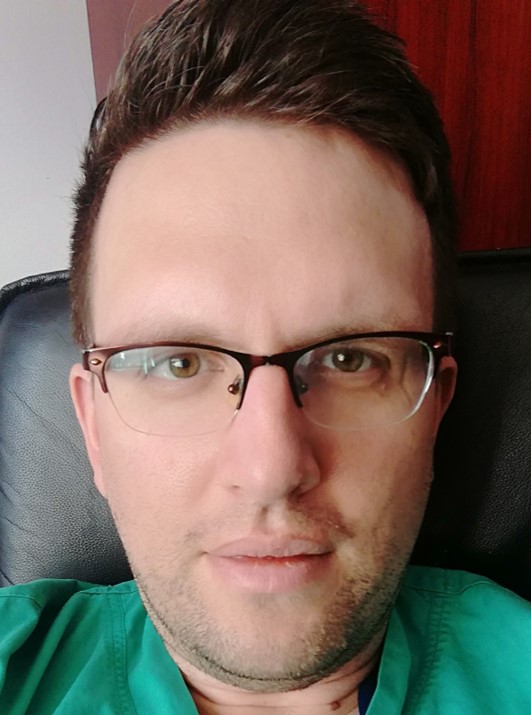Have COPD. Experiencing Pain In Back And Thigh. Lumbar Spine Mri Done. Are The Findings Normal?

Went to a chiro first and that just intensified my pain, went for adjustments for three weeks. Lower back pain it hurts to bend over or twist, not able to lift 10lbs without pain. Pain down the back of my left butt, thigh an leg. Can't sit very long and can't stand without moving overall weak and tired. My neck is injured as well but do not have the mri results yet.
Dull achy pain in right hip precedes the injury, My behind hurts and I have to readjust frequently when laying down to get comfortable. Laying down is the most comfortable position. What does the MRI report mean and what course of treatment? Long term prognosis for moderate heavy weight bearing work?
MRI REPORT
IMAGES PERFORMED: REVIEW OF LUMBAR SPINE MRI (03/26/2013) PERFORMED AT PREMIER MRI 4U, COVINGTON, LA
HISTORY: Neck, middle back and lower back pain x 1 month. Bilateral leg pain and numbness. Left arm pain and numbness. No reported injury.
IMAGING FINDINGS:
LUMBAR SPINE MRI
T1- and T2-weighted sagittal images, as well as T2-weighted angled axial images through the L1/2 – L5/S1 disc levels were obtained.
T12/L1: Unremarkable.
L1/2: Unremarkable.
L2/3: Unremarkable.
L3/4: Unremarkable.
L4/5: The disc is decreased in its T2 signal intensity and slightly in its stature. There is a right lateral disc bulge, which is predominately extraforaminal in location. This approximates the ventral aspect of the right L4 dorsal root ganglion without overt impingement of the structure.
L5/S1: The disc is mildly decreased in its stature and T2 signal intensity. There is left lateral disc bulging that extends into the intervertebral foramen and impinges on the inferior aspect of the exiting left L5 nerve root. Mild facet joint degeneration is present on the right.
The osseous dimensions of the spinal canal and neural foramina are adequate. The conus medullaris and cauda equina are normal in position and appearance. Incidentally, there is a congenital perineural sacral (Tarlov’s) cyst at the S2 level with slight erosion of the posterior S2 margin. No abnormal marrow signal is detected. The sagittal curve is satisfactory.
Continuation
XXXXXX
MRI Lumbar Spine
03/26/2013
Page 2 of 2
IMPRESSION
• Left lateral disc bulge at L5/S1 that impinges on the left L5 nerve root.
• Non-compressive right lateral disc bulging at L4/5.
• Mild L4/5 and L5/S1 disc degeneration.
• Mild right L5/S1 facet joint degeneration.
• Incidental Tarlov’s cyst at S2.
• No acute disc herniation or spinal stenosis.
COMMENTS
The above imaging findings suggest the potential for lower extremity radiculopathy, particularly associated with the left L5 dermatome. There are no contraindications to conservative management of this patient. Clinical correlation is recommended.
Your MRI findings confirm that cause of all your symtpoms is disc bulge. At L5 level it compress nerve root and your pain is resulting from it. Also you could feel some tingling sensation, urinating problem or muscle weakness. This is moderate degree of disc protrusion and there are no sign of disc herniation, but nerve compression can be worrying. This is usual part of aging process but many enviromental factors affect it as well.
Disc herniations can result from specific jobs that require constant sitting and squatting or weight lifting. Minor back pain and chronic back tiredness are indicators of general wear and tear that make one susceptible to herniation.
It can be treated by medications, physical therapy, manipulation (e.g. by a chiropractor), injections, and occasionally, surgery. SOmetimes indications for surgery aren clear and it is performed when the other treatment courses arent effective anymore. In your case chiro obviously isnt effective, it can sometimes improve symptoms but wont help to treat the exact cause.
Unfortunately, your job is your biggest problem and you cannot expect improvement until you do something with it. Try to ask your boss about another kind of working, you need to have time for rest,every 1-2 hours you should sit, lay or do streching exercises.
This bulging wont disappear by itself, you should try conservative managment as long as you can,but need to be motivated and follow doctors recommendations., take antiinflammatory drugs, exercise often and avoid heavy lifting. If this bulging progress ,sooner or later you ll have to visit surgeon.
Hope I have answered your query. If you have any further questions I will be happy to help"
Answered by

Get personalised answers from verified doctor in minutes across 80+ specialties



